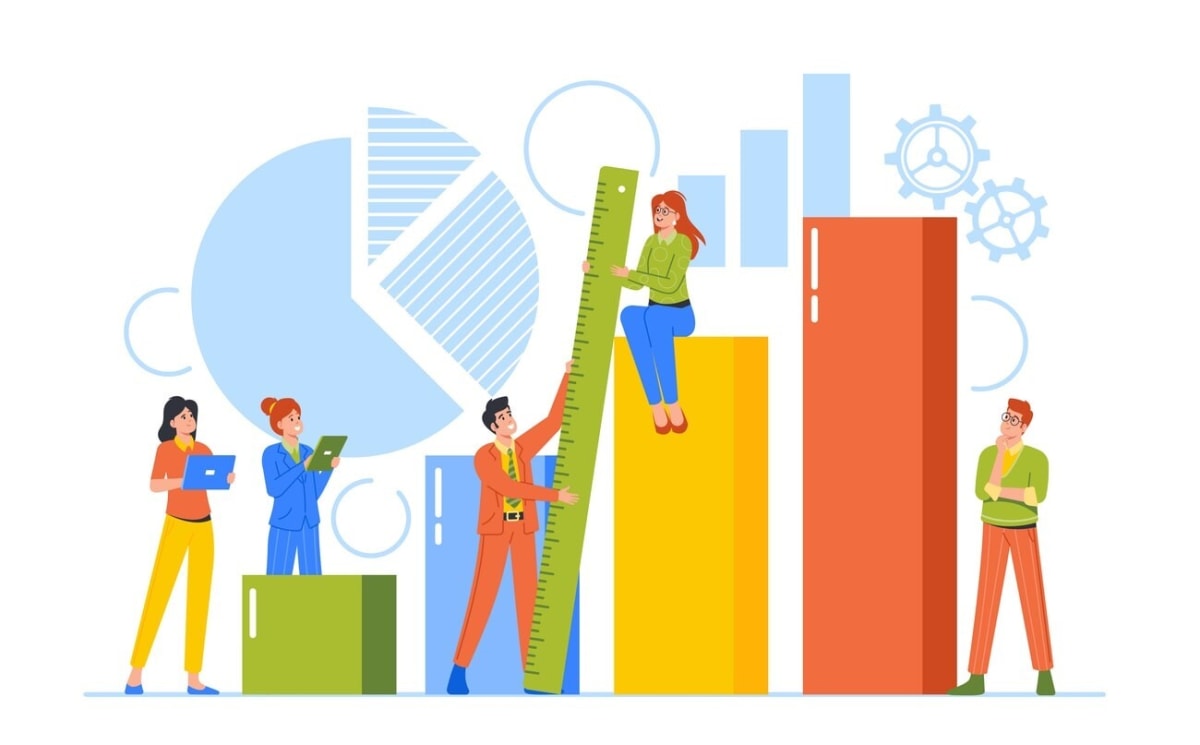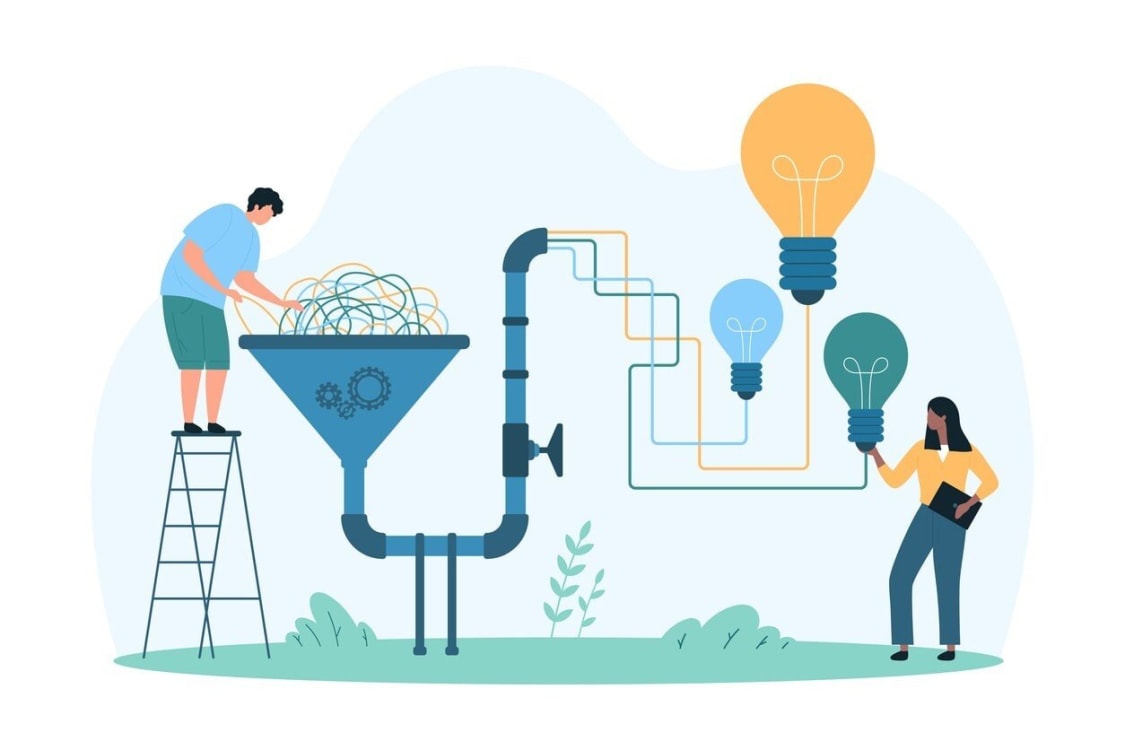What can a business do to improve its productivity? If you’re looking for ways to make your business more efficient, this article offers nine proven strategies that can help. From evaluating current productivity levels to leveraging technology and fostering a positive work environment, we cover actionable steps you can take to increase productivity in your workplace.
Key Takeaways
- Measuring current productivity levels using tools like Gallup’s Q12 survey and pulse surveys is essential for identifying areas of improvement.
- Embracing technology and automation, as well as fostering a positive work environment, significantly enhance employee productivity and job satisfaction.
- Establishing clear goals and expectations, along with acknowledging and rewarding employees, drives engagement and improves overall workplace productivity.
Evaluate Current Productivity Levels

Before you can improve productivity, you need to know where you stand. Business productivity is defined as the efficiency of completing tasks within a specific period, typically measured by revenue relative to employee labor productivity hours. Revenue per employee serves as a crucial productivity metric to assess efficiency concerning the workforce’s size. Establishing a baseline of your organization’s economic performance facilitates measuring progress and drives future productivity initiatives to increase business productivity, workplace productivity, and lost productivity in workforce productivity, including partial productivity, national productivity, increased productivity means, and your own productivity.
To comprehensively understand your productivity levels, utilize various productivity measures to measure productivity:
- Gallup’s Q12 survey quantitatively measures employee experiences and can provide insights into productivity levels.
- Pulse Surveys are valuable for gathering insights on employee engagement and identifying areas that need improvement.
- Workload levels significantly affect employee productivity, with imbalances leading to stress or decreased motivation.
Analyzing current processes and systems helps identify inefficiencies that hinder productivity. Thoroughly evaluating your business’s productivity reveals areas for improvement and enables the development of productivity strategies to improve business productivity and boost overall efficiency. Remember, what gets measured gets managed.
Streamline Processes

Streamlining processes involves simplifying or removing unnecessary tasks to enhance overall efficiency. Effective streamlining reduces costs and improves productivity by allowing employees to focus on essential tasks. Improved communication and transparency are key benefits of streamlined processes, enabling better tracking of tasks across departments.
Begin streamlining processes by:
- Assessing your current workflows
- Identifying bottlenecks and inefficiencies that slow down productivity
- Gathering employee feedback to uncover valuable insights into process improvements
With firsthand knowledge of daily operations, employees can offer practical suggestions.
Business process management software can significantly aid in automating and streamlining workflows, reducing repetitive tasks and freeing up time for critical activities. Continuously improving and refining processes fosters a more productive business environment.
Leverage Technology and Automation
Leveraging technology and automation is crucial for increasing productivity in today’s digital age. These tools offer several benefits:
- Free up employees’ time for more strategic work, improving overall efficiency.
- Provide automated data analysis with real-time insights, enabling teams to respond quickly to changes.
- Integrate AI tools that can lead to significant time savings and enhance decision-making processes.
Chatbots for customer service offer several advantages:
- Free up human resources for more complex tasks.
- Automation standardizes processes, ensuring consistency and reducing human error.
- Cloud-based automation solutions allow employees to access tools and data from anywhere, increasing flexibility.
Moreover, AI tools can aid in managing meetings by automating note-taking and summarizing discussions. Embracing technological advancements allows organizations to maximize productivity and stay competitive.
Foster a Positive Work Environment

A positive work environment boosts employee productivity. Aligning company culture with core values enhances organizational culture and business outcomes. Inclusivity in the workplace leads to better decision-making and a stronger sense of belonging among employees. A healthy work environment combines various positive elements like creativity, social interaction, and goal orientation.
Team-building activities significantly improve morale and job satisfaction by:
- Fostering employee relationships and collaboration among team members
- Prioritizing employee well-being, which leads to less stress and fewer missed workdays
- Offering tools for coping with stress and understanding employee experiences to enhance wellness, mental health, and team productivity
Frequent employee surveys effectively assess morale and engagement. Low morale and motivation negatively impact performance. By fostering a supportive and inclusive work environment, companies can boost productivity and ensure employees feel supported and satisfied.
Encourage Flexible Working Arrangements

Flexible working arrangements enhance employee productivity and job satisfaction. Remote workers can benefit from options that reduce absenteeism, as employees can manage personal commitments without affecting their responsibilities. Employees who have more control over their work conditions tend to experience higher job satisfaction and a stronger sense of belonging within the company.
Flexible work arrangements foster a culture of trust between management and employees, encouraging responsibility and engagement. Flexible work arrangements allow employees to tailor schedules to their peak productivity times, enhancing overall efficiency. Clear communication and established policies are crucial for successfully integrating flexibility into the workplace, ensuring everyone understands their roles.
Options to empower employee flexibility can include:
- Flextime
- Telecommuting
- Generous PTO
- More vacation time
By embracing flexible working arrangements, companies can create a more adaptable and agile working, productive employees workforce.
Invest in Employee Training and Development
Investing in employee training and development has several important effects:
- Improves skills and productivity.
- Links training to personal and professional goals, ensuring employees see value in their roles.
- Prevents significant costs due to inefficiencies caused by neglecting training.
- Leads to improved job performance.
- Increases employee satisfaction.
Opportunities for continuous improvement and professional development and growth boost employee satisfaction and productivity. Investing in training enhances skills and engagement. Employee training and development programs communicate to staff that they are valued and that growth within the organization is possible.
Organizations that prioritize employee training often experience greater innovation and adaptability. By investing in training and development, companies can boost engagement, loyalty, and overall productivity.
Recognize and Reward Employees
Frequent recognition significantly elevates engaged employees’ sense of belonging and engagement. About 90% of employees indicated that acknowledgment motivates them to exert more effort. Regular recognition, especially monthly, can increase employee engagement and productivity by 40%.
Employees who receive positive recognition from supervisors are 40% more engaged. Peer-to-peer recognition fosters inclusivity and collaboration within teams, significantly affecting motivation. Recognition reduces employee turnover; those who feel unrecognized are twice as likely to leave.
A well-designed recognition program can enhance average employee performance by over 11%. By recognizing and rewarding employees, companies can improve productivity and create a more engaged workforce.
Minimize Distractions
Distractions significantly affect productivity. To improve concentration, consider the following strategies:
- Encourage employees to spruce up work areas and minimize environmental distractions.
- Streamline office layout.
- Set areas specifically for focus.
- Limit personal calls and communication during work hours to help maintain focus.
Strategies to improve focus and productivity include:
- Setting specific times for checking emails to prevent fewer interruptions.
- Establishing boundaries with colleagues regarding non-work conversations to protect focus and time.
- Using focus apps or software to block online distractions and help maintain productivity.
Understanding the pitfalls of multitasking and the benefits of deep work can improve focus. Working in time blocks provides a structured approach to manage tasks and enhance focus. Minimizing distractions helps employees stay focused on important tasks and improves overall productivity through effective task switching.
Improve Meeting Efficiency

Excessive meetings reduce engagement with customers and disrupt task completion. Unnecessary meetings are a huge waste of time and detract from focused project work. Limit scheduling meetings to necessary participants and reduce their frequency to improve productivity by eliminating time wasting activities.
A clear agenda before meetings helps participants prepare effectively and remain focused. Understanding desired outcomes from the start ensures meetings are goal-oriented and efficient. Sharp agendas and focused discussions are key practices for well-run meetings.
Feedback after meetings provides insights into their effectiveness and highlights areas for improvement. Effective time management during meetings shows respect for participants’ schedules. Improving meeting efficiency reduces wasted time and boosts productivity.
Set Clear Goals and Expectations
Defining clear goals helps employees stay on track and get more done. Goal-setting provides structure and connects tasks to larger objectives, enhancing overall productivity. Understanding the following is critical for employees to maximize productivity:
- SMART goals
- KPIs
- Core values
- Vision
To improve goal management and productivity:
- Break large goals into manageable tasks to avoid feeling overwhelmed and stalling progress.
- Use SMART objectives to ensure employees understand their own tasks and can measure success effectively.
- Create specific job descriptions to provide clarity in roles and responsibilities, enhancing productivity to increase productivity and increase employee productivity. Additionally, maintain a to do list to track progress on these tasks.
Clearly communicated expectations ensure understanding of roles and minimize the need for revisions. Establishing clear expectations can save time in project timelines. Tracking progress involves regular evaluations and adjusting strategies as necessary. By setting clear goals and expectations, companies can guide employee efforts and improve overall productivity.
Summary
It’s clear that improving productivity in the workplace requires a multifaceted approach. From evaluating current productivity levels to leveraging technology and fostering a positive work environment, each strategy plays a crucial role in enhancing efficiency and engagement.
By implementing these strategies, businesses can create a more productive and motivated workforce. Remember, the key to increased productivity lies in continuous improvement and adaptability. Stay committed to these strategies, and you’ll see tangible results in no time.
To effectively evaluate productivity levels, consider key metrics such as revenue per employee, employee engagement scores from Gallup's Q12 survey, and Pulse Surveys. Establishing a baseline is essential for measuring progress and guiding future improvements.
Technology and automation significantly boost productivity by freeing up employees for strategic tasks and delivering real-time insights through automated data analysis. Platforms like Kumospace take it a step further by creating immersive virtual workspaces that streamline communication, improve meeting efficiency, and keep teams aligned.
Flexible working arrangements enhance employee well-being and job satisfaction while reducing absenteeism and fostering trust. By allowing employees to customize their schedules for peak productivity, organizations can boost overall efficiency.
Recognizing employees boosts their sense of belonging and engagement, which can increase productivity by up to 40%. Regular acknowledgment fosters motivation and collaboration, creating a more inclusive work environment.
To minimize distractions at work, establish specific times for checking emails, utilize focus apps to limit online interruptions, and set clear boundaries with colleagues about non-work discussions. Additionally, keeping your workspace organized and working in time blocks can significantly enhance your productivity.





